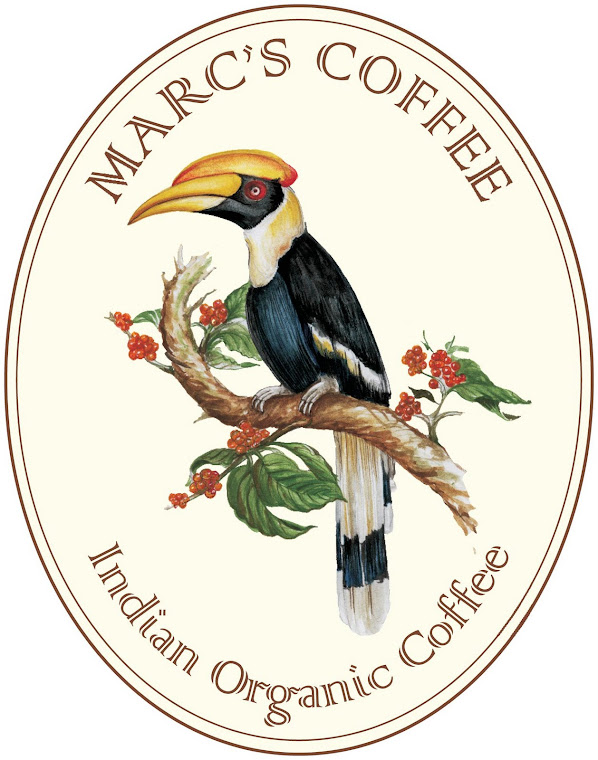New harvest 2010-11
The first ripen coffee cherries are being hand picked at Jaivik Greens Organic Estate, Coorg. From left to right: Jose Luis ( Coffee Ideas!), Shantala and Tippu (owners of Jaivik Greens), Apu van Otterlo (consumer), Jessamijn Miedema(Coffee Ideas!), Sijmen and Madu.
We have walk around all the different blocks, each one has its own particularities. We are walking towards the Rosewood block, here we find 53 full grown Rosewood (Dalbergia latifolia) trees.
Tracing the stem white borer (Xylotrechus quadripes). The expert eyes of this man checks any affected tree so it can be either treated or uprooted and burned.
The white borer is a pest that needs to be monitored carefully, otherwise can wipe out completely a plantation and quickly spread in the whole area .
The most humid places of the plantation are used to grow cardamom.
The first batches of parchment being sun-dried.
Jose Luis and Tippu
The banana flower
Centenary trees like this one have a safe place at Jaivik Greens. Many forest in Coorg are destroyed to introduce unsustainable agriculture based on mono crops.
Pepper harvest
Making homemade wine is a tradition in Coorg. We have made different wines using paddy, wheat, sugar, raisins, passion fruit, almonds, cashews and coffee cherries.
Swimming in the Kaveri river
Crossing rice fields
Steam vegetable momos
Fruit vendor in Madikeri
Rice harvest
Nalkad Palace carving details.
Details of the roof at the King's room at Nalkad Palace
Tippu and Shantala at he entrance of the Palace
Our trekking to the highest peak in Coorg, Tadiandamol is about 1748m above sea level
Wild Water buffalos are seen as well as local cows.
The landscape is unique, climbing to the top of Coorg.
We found a scorpion
We crossed a Shola forest
Coffee Ideas! gave a talk on coffee at the annual conference organized by the Codagu Women's awareness body, in Sommarpet.
The talk was attended by more than 120 coffee planters from all the ares of Coorg
We showed some slides of our work, the response was very positive.
Getting lost in the Mysore market is a pleasant adventure, the vendors are friendly. The smell of spices, essential oils, sandal and incense is all around.
Locals buy their daily needs at the market
This shop is a very old one, they have a selection of essential oils of a very good quality.
At Mahatma Gandhi square you can find many local coffee roasters selling freshly roasted coffee.
Madikeri coffee roasting shop
We slept at the Chamundi Guest house in Mysore
Making pumpking pancakes in the morning, we had so much fun!
Grasshopper taking a sun bath






























































































































































